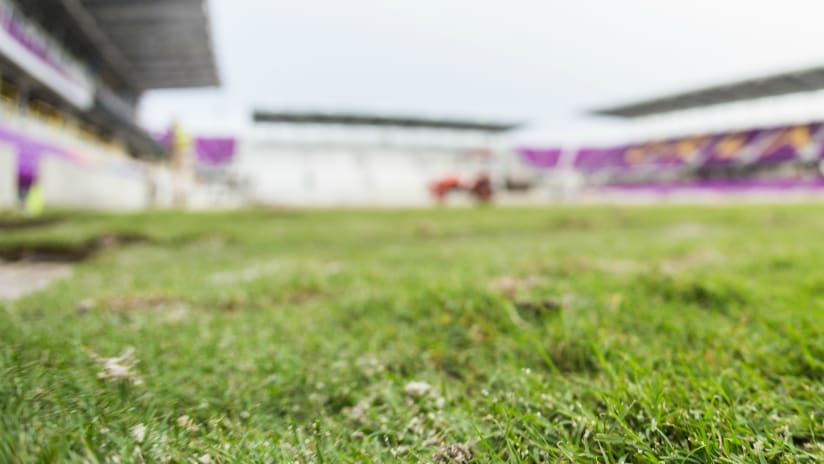ORLANDO, Fla. – When all the off-season developments are complete, Orlando City SC’s greatest new "signing'' this winter will almost certainly be the one that head groundskeeper Matt Bruderek has overseen this week.
It promises to be the "secret weapon'' that underwrites the Lions’ playoff bid in 2017, the special ingredient among various stadium and personnel moves that should ensure the perfect platform for Kaká and Co – a carefully-nurtured all-grass field.
It is the crowning glory – in more ways than one – in the 25,500-capacity stadium that is rapidly taking shape in downtown Orlando, and to which Bruderek put the finishing touches on Thursday afternoon with the help of a heavy roller.
“I’m not just saying this because it’s my job, but the field should definitely be included in what’s important,” Bruderek said. “It’s huge. You have these highly-paid athletes that go through so much in terms of fitness and conditioning that I know they’re going to appreciate playing on this field.”
Having seen the players on the artificial turf of Camping World Stadium for two years, Bruderek is ecstatic at the prospect of a natural surface at the new stadium.
“Sometimes when you see a player go down awkwardly, you see a little chunk of grass go out,” he pointed out. “That might just be what’s saved that guy’s knee, instead of awkwardly going into [non-yielding] FieldTurf.”
For a team that has suffered various knee and hamstring injuries in the past two years, it should be music to their ears. And, if anyone ever thought grass was not a sexy, or exciting subject, they just need to speak to the groundskeeper for a few minutes.
“This is something that’s been almost two-and-a-half years in the making,” he said. “It’s an essential element of the stadium and pretty much underpins everything we do. The last couple of months have been very busy and you want it to look like a surface that anyone can look at and know this is a serious place.''
The grass is called Latitude 36 and is a type of Bermuda grass, Bruderek said.
"They put it in at FC Dallas last year, they love it, and I’ve heard nothing but good things about it. It will help us stay green and growing throughout the winter and it’s also heat tolerant. I put a lot of time and thought into it and I’m pretty sure this will be ideal for good soccer.”
The winter growth aspect is key to establishing the kind of field head coach Jason Kreis will expect to see for the March 5 home opener against New York City FC next year. Bruderek needs the turf to bind with the undersoil in the next few months and form deep roots, and it is going to be a day-to-day process of oversight and maintenance.
“We can’t control the weather here, but we can give the soil all the care and nutrients it needs, including nitrogen and potassium,” he said. “All the time we have temperatures in the 60s that is good for the grass. And, if it goes lower, we have special blankets that will keep the warmth in and ensure we get the growth we need.”
With so much focus on what will be underfoot at Orlando’s new $155 million digs, it is inevitable Bruderek and his team have had a few nerves.
“I have been thinking about that a lot,” he admitted. “Every time someone comes here they can look at the field and judge how good a job we’re doing, and that’s tough to take sometimes. There is extra pressure with games that are on TV and these high-priced athletes that are using it, so you really have to make sure you’re taking care of things on a daily basis.”













